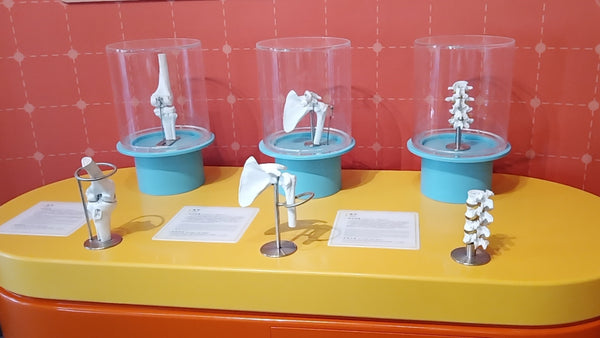The Ultimate Guide to Designing an Interactive Science Exhibit: Lessons from Jiangmen Science Museum

The Ultimate Guide to Designing an Interactive Science Exhibit: Lessons from Jiangmen Science Museum
Designing an interactive science exhibit is both a creative and technical endeavor that requires a deep understanding of your audience, innovative use of technology, and a strong focus on visitor engagement. At Jiangmen Science Museum, we've perfected our approach to create exhibits that not only educate but also captivate and inspire visitors. One of our standout exhibits is the Magnetic Levitation Light Bulb, which beautifully combines these elements. This guide will explore the key principles and strategies we use in designing top-tier interactive exhibits, using our Magnetic Levitation Light Bulb as a case study.
Understanding Your Audience
The foundation of any successful interactive exhibit is a deep understanding of the audience. At Jiangmen Science Museum, we cater to a wide range of visitors, from young children to seasoned science enthusiasts. This diversity requires a tailored approach to content and interaction:
- Age-Appropriate Content: We design our exhibits to suit different age groups. For instance, younger audiences might interact with tactile elements and simple explanations, while exhibits aimed at adults delve into more complex scientific theories.
- Cultural Relevance: Our exhibits are designed with the cultural context of our audience in mind, making the content more relatable and impactful.
Core Design Principles
Designing an interactive exhibit is about creating an environment that fosters exploration and learning. At Jiangmen Science Museum, our design principles ensure that each exhibit is both visually appealing and educationally effective:
- Simplicity and Clarity: We focus on clear and simple design elements that help visitors engage with the content without distraction. This includes intuitive navigation, clear signage, and concise explanations.
- Interactivity: Interactivity is the cornerstone of our exhibits. By using touchscreens, physical models, and motion sensors, we transform visitors from passive observers into active participants in the learning process.
- Aesthetics and Functionality: Our exhibits strike a balance between aesthetics and functionality, using design elements that are not only visually appealing but also enhance the educational value of the exhibit.
Magnetic Levitation Light Bulb Exhibit: A Case Study in Technology Integration
The Magnetic Levitation Light Bulb is one of our most popular exhibits and serves as an excellent example of how technology can be seamlessly integrated into exhibit design. This exhibit features a large light bulb that hovers in mid-air, powered by magnetic levitation technology. The exhibit is both visually stunning and scientifically intriguing, drawing in visitors and encouraging them to explore the principles behind it.
- Technology Integration: The use of magnetic levitation technology in this exhibit allows us to demonstrate complex physical principles in a way that is both accessible and engaging. Visitors can interact with the exhibit by adjusting the controls to change the height of the bulb, providing a hands-on learning experience.
- Visual Appeal: The levitating light bulb is a striking visual element that immediately captures attention. Its combination of movement and light creates a dynamic focal point within the exhibit, making it a standout attraction within the museum.
Engaging Visitors
Visitor engagement is essential to the success of any exhibit. At Jiangmen Science Museum, we employ a variety of strategies to ensure that visitors are not only entertained but also leave with a deeper understanding of the scientific concepts presented:
- Storytelling: We use storytelling to make complex scientific concepts more relatable and memorable. By framing the exhibit within a narrative, visitors can connect emotionally with the content, enhancing their understanding and retention.
- Gamification: Adding elements of gamification, such as challenges, rewards, and competitions, can significantly increase visitor engagement. For example, in the Magnetic Levitation Light Bulb exhibit, visitors might be challenged to maintain the bulb at a specific height for a certain amount of time, adding an element of fun and competition to the learning process.
- Social Interaction: Our exhibits are designed to encourage social interaction, allowing visitors to collaborate, discuss, and share their experiences. This not only enhances the learning experience but also makes the visit more enjoyable.
Testing and Feedback
Continuous testing and feedback are crucial to refining and perfecting our exhibits. Before launching any new exhibit, we conduct extensive testing with focus groups to ensure that it meets our educational and engagement goals. Feedback from these sessions allows us to make necessary adjustments, ensuring that the exhibit delivers the desired experience.
Conclusion
Designing an interactive science exhibit is a multifaceted process that requires careful consideration of audience needs, design principles, technology integration, and visitor engagement strategies. The Magnetic Levitation Light Bulb exhibit at Jiangmen Science Museum is a prime example of how these elements can come together to create an exhibit that is both educational and inspiring. By applying these lessons, you can elevate your interactive science exhibits to new heights, making them more impactful and memorable for your audience.
Call to Action: Ready to experience the cutting edge of interactive science exhibits? Visit Jiangmen Science Museum and explore our expertly designed exhibits, including the mesmerizing Magnetic Levitation Light Bulb. Whether you're a student, educator, or science enthusiast, there's something here for everyone to enjoy.
